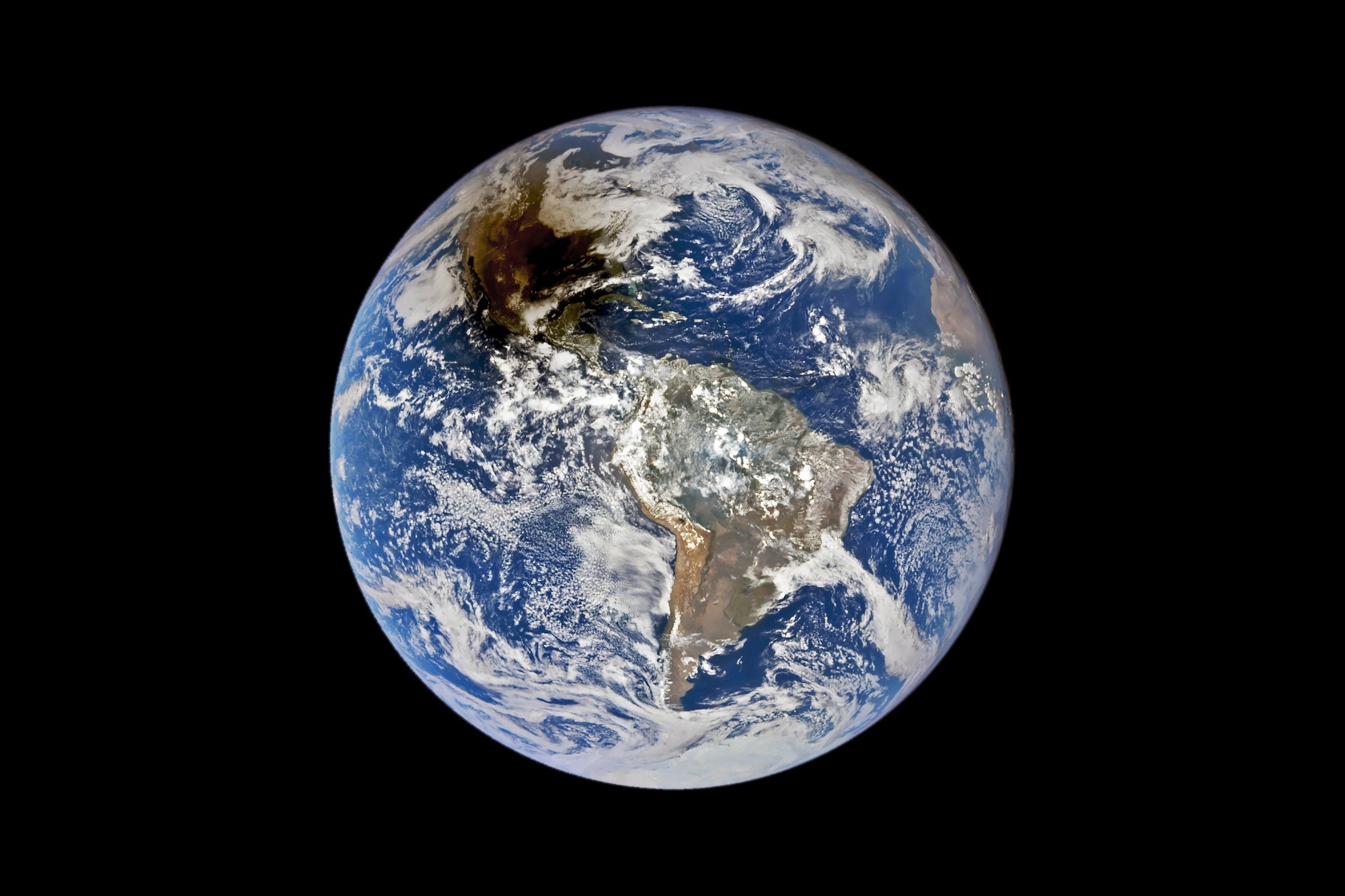Last Saturday, residents of different parts of the United States enjoyed the impressive spectacle of an annular solar eclipse. When the Earth, the Moon and the Sun align in ways that create a lunar shadow and the so-called “ring of fire”, a similar eclipse is formed.

Offering a different perspective, NASA shared a magnificent image of the same celestial phenomenon on Tuesday, which was visible from a distance of a million kilometers.
Solar eclipse “through the eyes” of DSCOVR
The image was taken by the EPIC camera (Earth Polychromatic Imaging Camera) on board the DSCOVR (Deep Space Climate Observatory), a satellite jointly operated by NASA, NOAA (National Oceanic and Atmospheric Administration) and the US Air Force. This spacecraft was launched by SpaceX in 2015.
The observatory is located at Lagrange Point 1, a gravitationally stable zone between the Earth and the Sun about a million kilometers from our planet. Although the main role of DSCOVR is to observe the solar wind to predict space weather, it also sends images of the Earth, which include what we see here.
This incredible photo clearly shows the fall of the Moon’s shadow over the USA when our nearest neighbor slipped between the Earth and the Sun last Saturday.
When an annular solar eclipse is observed from Earth, the Moon cannot completely cover the Sun, allowing people wearing protective glasses to see the edge of the nearest star appear around the outside of the Moon — a scene commonly called a ring of fire. It’s a fleeting sight. But the total solar eclipse could only be seen along a fairly narrow strip just under 200 km wide, which stretched across nine US states, from Oregon in the northwest to Texas. It was also visible from parts of Central and South America.
More eclipses
After the annular solar eclipse, humanity will see the next one on October 28. Next week, there will be a lunar eclipse that can be observed in parts of Europe, Asia, Africa and Australia. The next great solar eclipse will occur on April 8, 2024, and it will be visible from Mexico through the United States to northeastern Canada. This will give another chance for the satellites to observe the shadows falling on the Earth when the Sun and Moon meet together again.
Earlier, we reported on how NASA’s solar mission witnessed a stunning solar eclipse in space.
According to universetoday.com.
Follow us on Twitter to get the most interesting space news in time
https://twitter.com/ust_magazine

